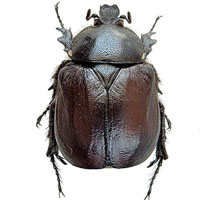Systematics and biology of the Ichnestomina, including new genera and species (Coleoptera: Scarabaeidae, Cetoniinae)
DOI:
https://doi.org/10.13133/2284-4880/473Keywords:
Goliathini, new genera, resurrected genus, new species, revised status, South AfricaAbstract
The subtribe Ichnestomina, endemic to southern Africa, exhibits a suite of plesiomorphic features that reflects a particularly old evolutionary age among the Goliathini. Sexual dimorphism is extreme and females are generally brachypterous and unable to fly. Also, adult stages do not feed, and therefore remain active for only a few days after emerging from the soil, devoting all their energy reserves to reproduction. Consequently, populations are range-bound to small areas, often completely isolated on high mountain peaks or ridges, leading to rapid speciation. Results of recent investigations and historical data are hereby combined to provide an updated and revised structure of the systematics of this subtribe. As a result, four genera are now recognised in place of the perceived uniformity earlier expressed with much reservation by Holm (1992). This involves the rehabilitation of the original name of Gariep Gory and Percheron, 1833, to accommodate species with fully winged and flying females as well as elongate and incision-free dorsal lobes of parameres (Gariep patera and G. perstriata. It is further proposed that the genus Ichnestoma Gory and Percheron, 1833 be restricted to species with moderate female brachyptery and males with cretaceous markings on their body surface. Consequently, two new genera are erected (Karooida gen. nov., Mzansica gen. nov.) and four species-complexes (Ichnestoma cuspidata, I. albomaculata, Mzansica nasula and M. luridipennis), are added in order to account for key differences among species, including degree of female brachyptery (wing:elytron length ratio), presence/absence of cretaceous markings, aedeagal structure and biogeographic distribution. Eleven new species (Ichnestoma carbonaria sp. nov., I. dealbata sp. nov., I. furcata sp. nov., I. karoominoris sp. nov., I. spatulata sp. nov., Karooida balli sp. nov., K. sagittata sp. nov., Mzansica botswanica sp. nov., M. clarki sp. nov., M. denticulata sp. nov., M. falcipata sp. nov.) are added to the 13 species and three subspecies currently recognised in this subtribe. The three subspecies are elevated to species status (Ichnestoma cochleata stat. nov., I. fuscipennis stat. nov., Karooida kikvorsti comb. et stat. nov.). The diagnostic characters of each taxon are described along with all available knowledge on the habitat characteristics and general biology of each species.
Downloads





